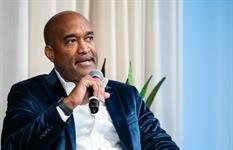
Check out what you missed.
Earlier this week at Microsoft HQ in Redmond, Washington, communicators gathered to share insights and learn from one another at Ragan’s Internal Communications Conference. We heard from dozens of comms pros on how AI will factor into their roles going forward, how internal comms never functions in a vacuum and how even external messaging pushes often begin with your employees.
We’ve gathered together some of the top lessons from the show to give you a sense of what was discussed on site at Microsoft this week.
- Dawn Klinghoffer, Microsoft: “Even if you can’t give people everything they want, you can always give them space to be heard. It’s messy and it’s imperfect, but when employees feel heard, they’ll move forward with you.”
- Gillian Sheldon, Napster: “AI technology like digital twins can help us customize communications for focused groups of employees.”
- Sukhi Sahni, Georgetown University: “We’ve reached a point where there’s no such thing as purely internal communication. Anything you say to your employees can surface externally within minutes. That’s why we have to start thinking of communications as fully integrated — a 360-degree discipline that connects employees, stakeholders and customers in one continuous conversation.”
- Sarah Lundy, Microsoft, “You are writing for humans. And now you’re also writing for AI. Our roles are changing.”
- Elizabeth Kosar, the state of Colorado: “It’s a tough time to be a government employee right now. Our employees are bought in — they know why they are there every day. But our job is not just to help them feel supported. It’s to find a way to say we see them.”
- Taylor Prewitt, T-Mobile: “We’re using recognition — especially surprise-and-delight moments — to quietly create influencers and advocates among our teammates. When someone comments about loving a new platform or helps bring others along, we reach out privately to thank them. That subtle recognition goes a long way in driving change.”
- Stephanie Guzman Barerra, King County, Washington: “By putting short, bite-sized videos on digital screens across our worksites, we’ve created an everyday connection. Even if someone’s just walking through a lobby, they see their leaders’ faces and feel included.”
- Darnell McAlpin, Comcast: “It’s our job as internal communicators to reduce the noise. We should be delivering content and information to our employees to help them get the job done. They shouldn’t have to decide what’s important and what’s not important.”
- Hilary Sparrow, Amazon: “My philosophy for all-team meetings is: make it like a morning talk show. Put different people on stage. Produce it like a show. And I do come from a film and television background, so maybe I’m biased — but you’re running a million-dollar meeting. You’d better deliver excellent content.”
- Megan Troppito, International: “If your employees do not believe in your brand, the external world never will. We start with our employees first — really get them to understand and believe in the company they work for and the brand they should embody — and then the external perception will come.”
- Anna Liotta, author of “Unlocking Generational Codes”: “Each generation will own and share the message if their voice has been invited into it.”
- Hannah Cho, Coupa: “I have an 80-20 rule with my team. We plan for 80% of our workload and the other 20% will be responsive.”
- Sarah Alamshaw, Seattle Storm: “It’s not a one-size-fits-all approach. You have to be thoughtful in finding the messages that resonate personally with your audience. That creates a next-gen fan that wants to come to games.”
Missed this conference and want more? Join us for Ragan’s Future of Communications Conference this November 12-14 in Austin.
Sean Devlin is an editor at Ragan Communications.
The post Top takeaways from Ragan’s Internal Communications Conference appeared first on PR Daily.











